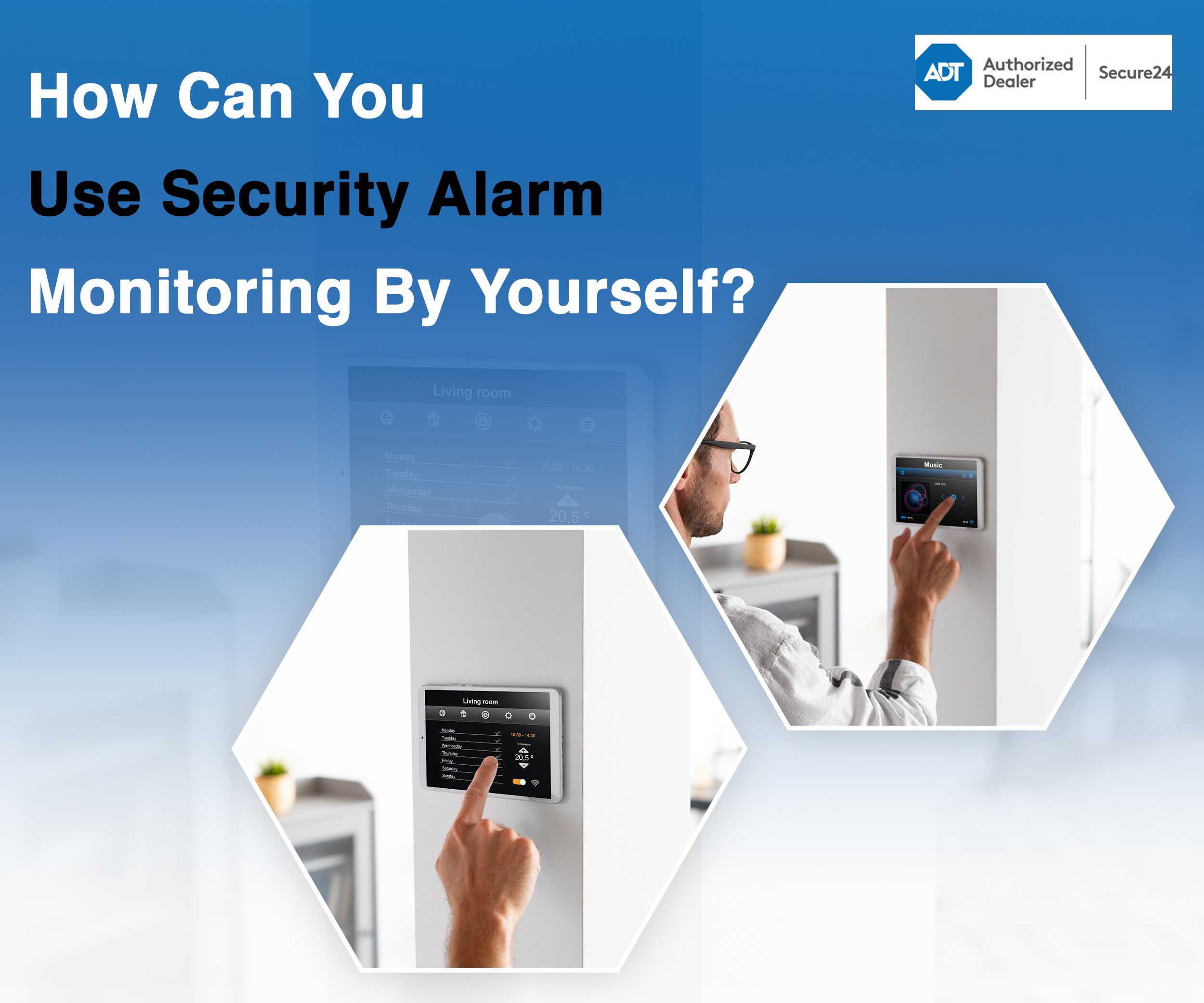
How Can You Use Security Alarm Monitoring By Yourself?
Security alarm monitoring system can be beneficial for remotely keeping an eye on your home even when you aren’t there or out of town. This helps by allowing you to oversee your residence’s security and safety personally. In this blog, we will be discussing how you can effectively monitor your home alarm security system.
How to Use Security Alarm Monitoring?
Choose A Good Security System: Selecting a reliable home security system is crucial. Choosing the one that provides self-monitoring is a great choice. You should look for systems that provide timely notifications and alerts and have remote access to the system that can be used via a mobile application or web portal.
Install Security Cameras: Strategically install security cameras around your property to monitor different corners of the area. Ensure that the security cameras are surveilling the major entry points like windows, doors, and driveways. You must position the camera at a proper height and install them properly to get a clear view of your surroundings.
Enable Motion Sensors: Motion sensors help detect movement in the range of the designated area and trigger the alarm accordingly. They should be installed at the entry points or in the key areas of your house, like the rooms with major valuable belongings and the hallway.
Set up Door/Window Sensors: Window and door sensors detect and set off the alarm when opened or closed. They should be installed on all accessible points. You will be sent an alert when there is a security breach.
Configure Remote Access: Configure our security alarm monitoring system to your home’s network to get remote access via the website portal or mobile application provided by the security system provider. You should carefully follow the instruction manual shared by the manufacturer to install and configure your security system’s remote access.
Test Your System: You must periodically test your security system to ensure that all the parts of the system are functioning properly. Test motion sensors and trigger alarms, and verify if you receive notifications and alerts on your computer or mobile device.
Enable Alerts And Notifications: Enable your security system to share notifications and alerts for any potential threat or security breach. This may include motion detection, alarm trigger, or window/door breach. Ensure you receive the notification via a mobile or email on your preferred device.
Create Emergency Contacts: Establish a list of emergency contacts, which includes local authorities, friends, neighbors, or family members who can offer you help in case of any threat or emergency. This information must be shared only with trusted individuals.
Things to Consider When Using Security Monitoring By Yourself
Responsiveness and Availability: When you self-monitor your security alarm monitoring system, you must be responsive and available to check the security notifications and alerts. Understand your ability to monitor your system consistently and respond promptly to potential security threats if you travel frequently or have a busy work schedule that may cause a hindrance in your availability to respond to notifications and alerts promptly. In that case, you might need more than self-monitoring.
Technical Knowledge: You must evaluate your technical knowledge and level of comfort in managing a home security system. A self-monitoring system requires setting up and configuring the devices, troubleshooting in case of any technical issues, and ensuring connectivity. Professional security monitoring can be an ideal choice if you lack technical know-how.
Cost Analysis: It is important to analyze the cost of self-monitoring and professional monitoring systems before investing in one. You must consider equipment costs, maintenance costs, and any available discounts or insurance benefits associated with the monitoring system. Determining the cost comparison between self-monitoring and professional monitoring can help you make an informed purchase decision.
Risk Assessment: Considering the safety risks specific to your property and location is important. Evaluating factors such as crime rate in your locality, vulnerability of the entry points, and the amount of valuable assets present. Suppose your locality is in a high-risk zone with frequent break-ins, or you have valuable items at your residence. In that case, an ideal choice is opting for a professionally monitored security system.
False Alarms: Assessing the potential of false alarms in your home is essential. Factors that can trigger a false alarm include environmental conditions, pets, or system malfunctions. You must determine if you can efficiently manage and handle false alarms without causing inconvenience or undue stress.
Emergency Response: Considering your ability to manage and handle emergency situations is important. In medical emergencies, fires, or break-ins, you will be responsible for contacting the emergency service, sharing information, and coordinating accordingly. You must evaluate your capability and confidence in managing these situations effectively.
Privacy and Data Management: You must assess your privacy concerns and ability to manage and secure data. Self monitoring systems allow you full control over your data, but they can also give you the responsibility of keeping them secure and safe. Thus, it is important to evaluate your capabilities and willingness to use appropriate measures to ensure the security and safety of your data and prevent unauthorized access.
Final Thoughts
A security alarm monitoring system is a good investment for your property as it can help safeguard your home and loved ones. Whether you use a self-monitoring security alarm system or get a professionally monitored one depends on your technical knowledge, availability, and preference. A self-monitoring system can be a cost-effective solution if you have the availability and interest to monitor your property actively. However, professional monitoring suits your requirements for a more hassle-free, convenient and 24/7 surveillance.

No Comments